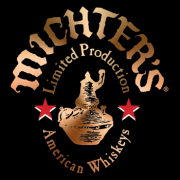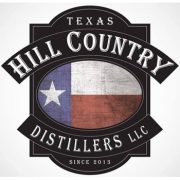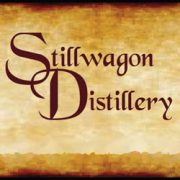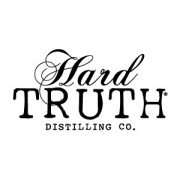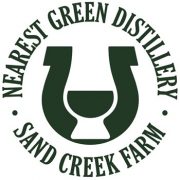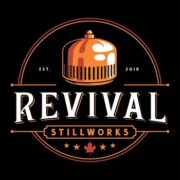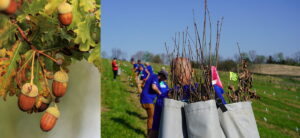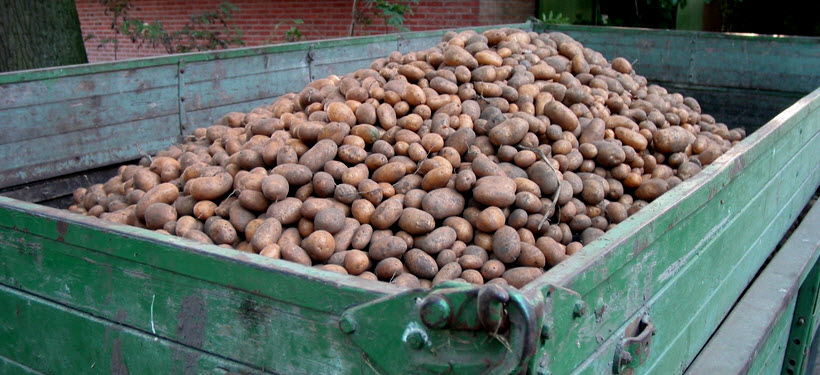
Surplus potato supply could be a boon for local craft spirit distiller in upstate New York.
Steuben County, New York is located about 270 miles Northwest of New York City and 80 miles south of Rochester in the heart of The Finger Lakes region. In Steuben County, farmers throw away anywhere from 10 to 40 percent of their potato product because it does not meet the specifications of major potato customers, such as UTZ potato chips. These waste potatoes are too large, small, or irregularly shaped for potato chips. Craft potato vodka distilleries in other communities, such as Cold River Vodka in Maine, have grown out of this need, providing an outlet for potatoes that are not marketable otherwise.
To provide an outlet for these “waste potatoes”, the Steuben County Agricultural Economic Development Project along with the American Distilling Institute put together a comprehensive financial feasibility study of developing a craft vodka distillery that used these potatoes. Based on the projections, as much as $500,000 in new revenue could be paid to farmers for the potatoes used for craft vodka production over the first 10 years of operation.
While the direct employment at the distillery is small, businesses in this industry have a high jobs multiplier. In the case of the distillery, the multiplier is 5.17, meaning that for every job created at the distillery, an additional 4.17 jobs are created elsewhere in the economy. By year 10, nearly 19 indirect jobs could be created in addition to the 4.5 jobs created at the distillery.
Artisan distillery, Ray Stuyvesant owner of Tranquility Farm Vines, Wines and Spirits and Whiskey Creek Distilling is looking to take advantage of this opportunity to grow his distillery if the grant money becomes available. Ray is in the process of making a final decision if he will apply for the grant money.
Vodka Factoid: A reader, RJ Irwin pointed out that, ‘Less than 1%of global vodka production utilizes potatoes as distillation feedstock.” According to Glacier Potato Vodka, “There is a common misconception that most, if not all, vodkas are made from potatoes. In fact, 99% of vodkas in the world are distilled from grain – corn, wheat, or rye – using the least costly grain available.” Thanks for pointing this out RJ!
Below is the complete financial feasibility study from the Steuben County Agricultural Economic Development Project.
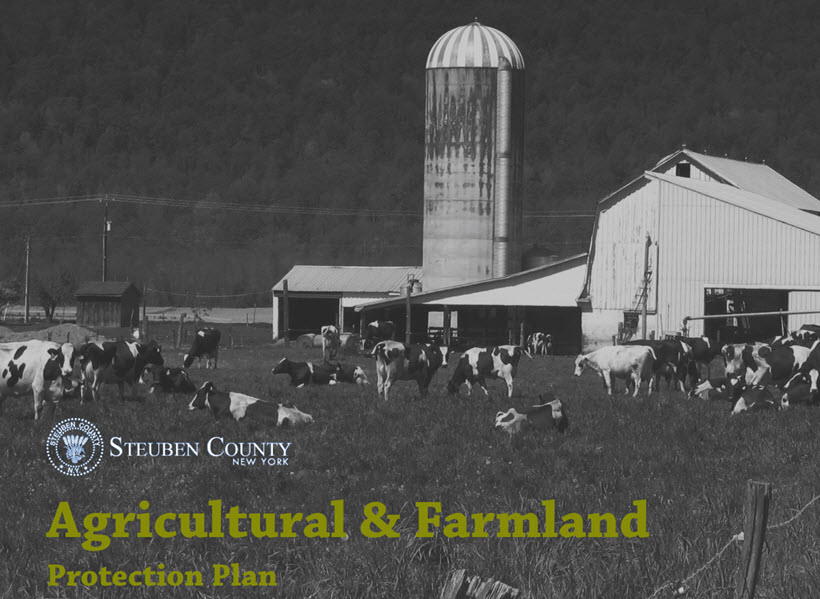
Vodka Distillery
Introduction
The number of small, micro distilleries has been increasing across the country and New York State, mirroring earlier growth in the craft beer industry. Most of these new distilleries produce craft whiskey. However, vodka distilleries are increasing in popularity, with distillers using inputs ranging from traditional grains to beets and sweet potatoes. While still rare compared to more typical grain inputs, some distilleries are using potatoes to produce small batches of high quality vodka. These vodka distillers, such as Cold River Vodka in Maine, often grow out of a need to find a use for “waste potatoes” that are too large, small, or irregularly shaped to be used for other potato products, such as chips.
To determine whether a potato vodka distillery could be financially feasible in Steuben County, financial information from other craft distilleries and analyzed information provided by the American Distilling Institute was reviewed.
The potential operation was initially analyzed assuming purely private sector funding. Based on the distillery’s IRR and DSCR, a vodka distillery would not be considered financially feasible without grant funding and preferential financing. In the past, grant funding has been provided through New York State’s Consolidated Funding Application and the USDA’s value-added agricultural processing program to help fund similar operations. If the Steuben vodka distillery were able to receive a $203,000 grant and a 20-year loan at 1% interest, the project would be financially feasible. As previously noted, these loan terms could be offered through the Rural Initiatives Program through the Steuben County IDA.
Analysis Overview
In Steuben County, farmers are unable to sell between 10 to 40 percent of the potato harvest because it does not meet the specifications of major potato customers, such as UTZ. With over 2,900 acres of potatoes harvested in the county, this amounts to significant lost income for the farmers.
A vodka distillery that uses potatoes as the primary input would provide a secondary market for these “waste potatoes.” The vodka distillery modeled in this scenario rents a 2,500 square foot facility. The distillery would produce over 14,000 bottles in year 1, using about 250,000 pounds of potatoes. Over 10 years, the number of bottles produced would double to over 31,000. By year 10, the distillery would be using about 550,000 pounds of potatoes annually.
Typically, craft distilleries are not large employers. Often, the owner may work alone or with another part-time worker to setup and operate the distillery for the first years of operation. In this example, the number of staff required to produce 1,100 cases in year 1 was 2.5 FTE, growing to 4.5 FTE in year 10.
Project Benefits
By providing a secondary market for potatoes, the vodka distillery would increase the income of potato farmers in the area. Over the first ten years of the vodka distillery’s operation, over 4 million pounds of potatoes would be purchased by the distillery, generating $440,000 of income to farmers. Since it is assumed that these potatoes would be unsold without the distillery, this $440,000 would be new income to the farmers. This new income could retain existing potato farmers in the community and improve the profitability of their establishments.
While the direct employment at the distillery is small, businesses in this industry have a high jobs multiplier. In the case of the distillery, the multiplier is 5.17, meaning that for every job created at the distillery, an additional 4.17 jobs are created elsewhere in the economy. By year 10, nearly 19 indirect jobs could be created in Steuben County, in addition to the 4.5 jobs created at the distillery.
The distillery could also be a tourism draw, leveraging existing craft beverage tourism assets in the region. The craft distillery could attract tourists interested in “farm to bottle” products, and contribute to the region’s beer, wine and vodka “trails”.
Project Costs
The distillery’s initial startup costs of equipment and building upgrades are estimated at $550,000. The costs of wages is expected to be the biggest operating expense at the distillery. The costs of marketing is also expected to be high, accounting for between 15% and 20% of all expenses in a given year. This high marketing expense is necessary to establish the new vodka in the market and ensure it is appropriately branded as a premium liquor crafted from local inputs. The costs of packaging and the federal excise tax are the highest after wages and marketing costs.
Without grant or other financial support, over $770,000 of owner’s equity and bank financing would be required to fund the project’s startup costs as well as its initial operating expenses until it reaches profitability. If depreciation is considered, the capital required increases to over $1,000,000.
Financial Analysis
Assumptions
To assess the financial feasibility of the malt house, the team identified key assumptions for the project, as outlined below. Additional assumptions are included in the attached spreadsheets.
- Financing: A loan amount of 65% of the development cost, with an interest rate of 6% amortized over 10 years.
- Capitalization Rate: 15% capitalization rate (the rate of return based on the expected net operating income the business will generate). This figure is used to calculate sale proceeds. At the end of year 10, we assume the business is sold, generating $760,872, net of commission and after paying off all remaining debt.
- Inflation: 2% rate of inflation of the inputs and products
- Building size: 2,500 sq. ft.
- Rent: $11/sq. ft. (including insurance, property tax, and common area maintenance)
- Construction and equipment costs: $550,000
Financial Analysis
Generally, distilleries face higher startup costs and a smaller market than their counterparts in the brewing industry. Without grants or preferential financing, the distillery modeled here would have negative operating income for the first two years of operation, becoming positive in year three. However, when depreciation and debt service are considered, the operation would not become profitable until year 9.
Debt Service Coverage Ratio (DSCR): The debt service coverage ratio (DSCR) is a measure of the resources available to pay debt service (calculated as the ratio of net operating income to debt service payments). Typically, a DSCR of 1.25 is the minimum required for banks to finance a project. Based on the assumptions for this project, the DSCR is negative for the first two years of operation. In the third year, the DSCR is positive but below the 1.25 threshold. In year 7, the project meets the desired threshold, with a DSCR of 1.34.
Internal Rate of Return (IRR): The internal rate of return (IRR) is a calculation of the profit on an investment on a pre-tax basis over a period of time. In the case of the distillery, the time period analyzed is 10 years. Depending on the risk profile of a project, the minimum benchmark IRR will change. For this project, we have assumed a benchmark of 15% as the minimum IRR an investor will accept.
Conclusions
With financial assistance in the forms of grant funding and preferential financing terms, the operation could improve its financial standing. To achieve the 15% IRR desired by most investors, the distillery would need a grant of about $203,000 and a 20-year bank loan at 1% interest. Nearly $420,000 of additional owner’s
equity and bank financing would be required to cover startup costs and operating expenses until the distillery is profitable. When depreciation of the equipment at the distillery is considered, the amount of equity and bank financing required increases to nearly $610,000. With this level of public support and startup capital, the distillery would be considered financially feasible.
Similar ventures have received funding through the Regional Economic Development Council Consolidated Funding Application process. However, the grants for distilleries have ranged widely from $15,000 to over $100,000. The awardee of the $100,000 grant included the renovation of an historic bar as a tourism attraction in addition to the creation of a farm distillery, which may be a reason for the high grant funding. A new cider, beer, and spirits producer in the Hudson Valley received about $1.5 million in NYS grant funding, however, this was a much larger scale project than what is being considered in Steuben. With these examples in mind, the Steuben farm distillery may have to consider funding sources outside of Regional Economic Development Councils, such as the US Department of Agriculture.
The US Department of Agriculture provides funding for activities related to processing of bio-based, value added products through the Value Added Producer Grants program. A similar operation in North Carolina that produces vodka from unused sweet potatoes received funding through this program. The USDA also provides loan guarantees for bank financing, which could help this project secure low interest, long-term financing.
You can download this Steuben County Agricultural Economic Development report here.

